Pink rose: species, varieties and cultivation
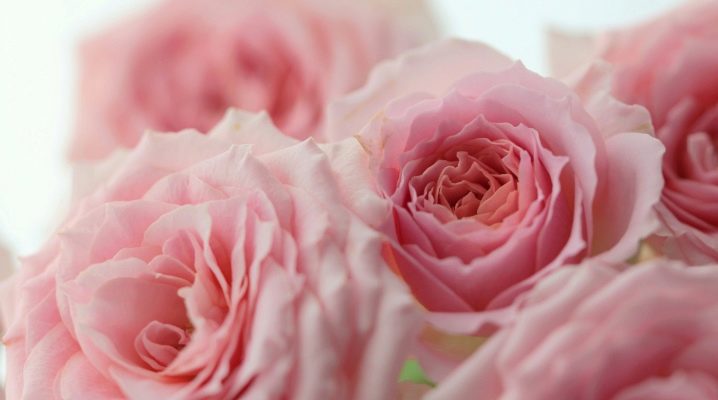
It is customary to call a rose plants of various cultivated species that are descendants of wild rose hips. Varietal roses were created by selective selection and crossing of a variety of wild rosaceous species. The cultivated varieties of modern roses are striking in their shapes and color diversity. Their history begins its countdown from the times of the existence of the ancient Roman and ancient Greek empires.

Garden breeding varieties of roses were brought to Russia at the beginning of the 16th century. These beautiful plants gained the greatest popularity during the reign of Catherine II, palace gardens and parks were decorated with such flowers, in addition, roses were an invariable attribute in every interior of the royal apartments.
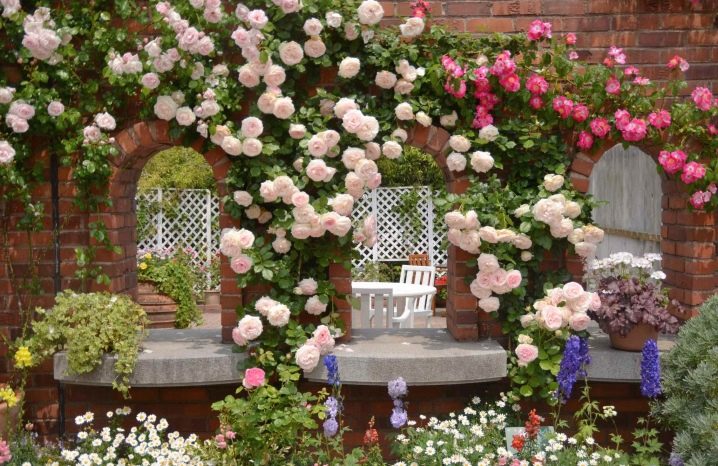
Description of species and varieties
The most common color shades of roses are considered to be pink varieties. Such a rose has a huge number of species, among them there may be unusual combinations of color and shape of the petals, there are also species with an abundant and long flowering period. There are really a great many types and varieties of pink roses, and their names are very poetic: "Eden", "Paulina", "Ecuador", "Queen Elizabeth", "Versilia". It is simply impossible to tell about each variety and choose the best ones, but we will present some of them to your attention.
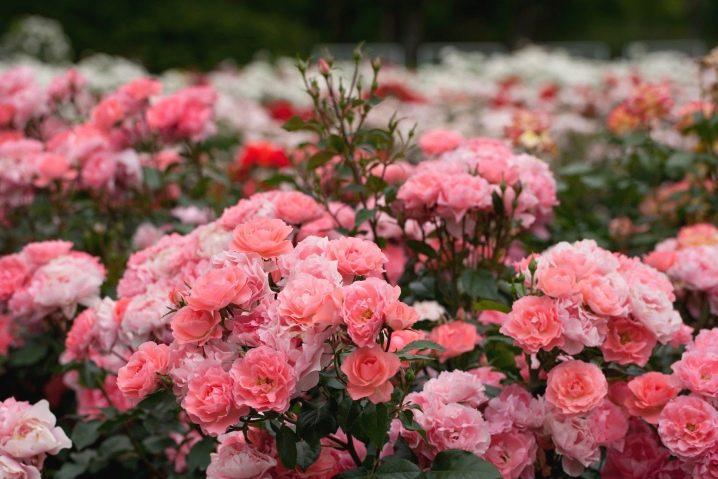
- "Eden". This variety has two-colored inflorescences that will attract not only your attention, but also your sense of smell. Rose "Eden" exudes a very tart sweetish smell. The color of the petals is a combination of white and rich pink shades. The inflorescences of this rose bush with a height of 1.5 to 2 meters are quite large, the rose blooms profusely from June to autumn frosts in a continuous mode. The "Eden" variety loves light and warmth, it is quite widespread in the southern part of Europe, and it also liked the Crimean natural habitat.
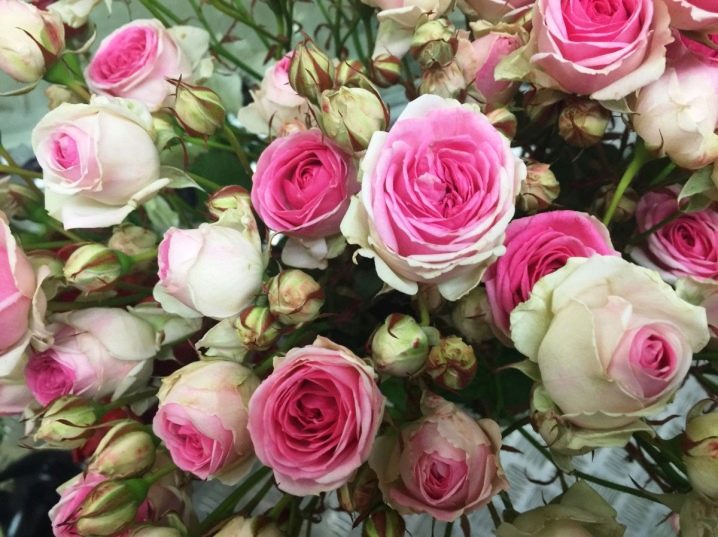
- "Green Diamond". This is an amazing flower, unusual in its color. The rose has a double petal, which gives the inflorescence a three-dimensional appearance. In the bud stage and in the initial phase of its opening, the rose has a shade of pale pink color. Then, with the full opening of the bud, the petals change their color, and the pink-green scale of the flower appears to our eyes. It is noteworthy that this rose practically does not smell, but it is able to maintain the shape of an inflorescence for a long time, without crumbling or fading. The plant itself is compact, it grows in the form of a bush to a height of one and a half meters. Flowering is usually very abundant.
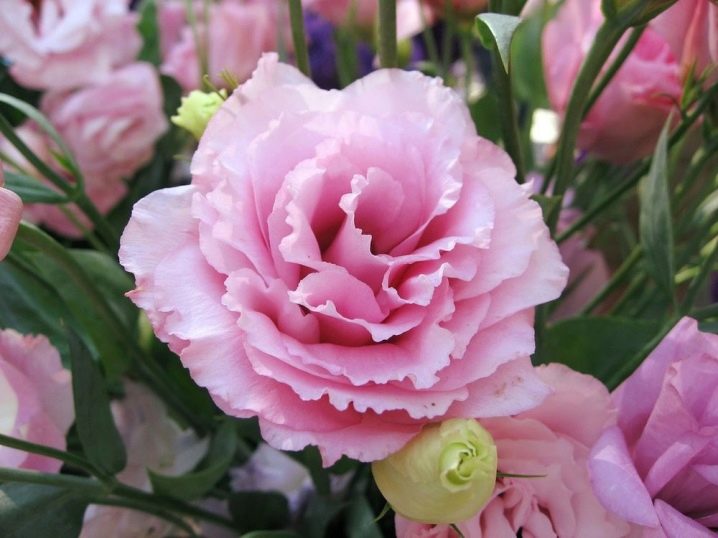
- Anna Pavlova. This is a little-known hybrid tea species, which was bred by breeders to the part of the ballerina Anna Pavlova. The plant blooms as a single flower, its inflorescence is large, but due to the fact that the multiple petals are pale pink, the impression of lightness and fragility is created. The petals have an interesting feature - closer to the corolla they have an increasingly saturated pink color, and from about the middle the color of the petal brightens. So the whole inflorescence looks pink from the inside, and with white edges of the petals.

- "Glory of the Lord". This variety, bred in the last century, in 1945, as a symbol of the end of the World War, is still loved and revered for its beauty in our time. This plant has a very developed root system and rather powerful branched stem shoots - they grow up to one and a half meters in height, and are crowned with magnificent pink-yellow inflorescences.In addition to its unusual beauty, the variety has the finest persistent aroma.
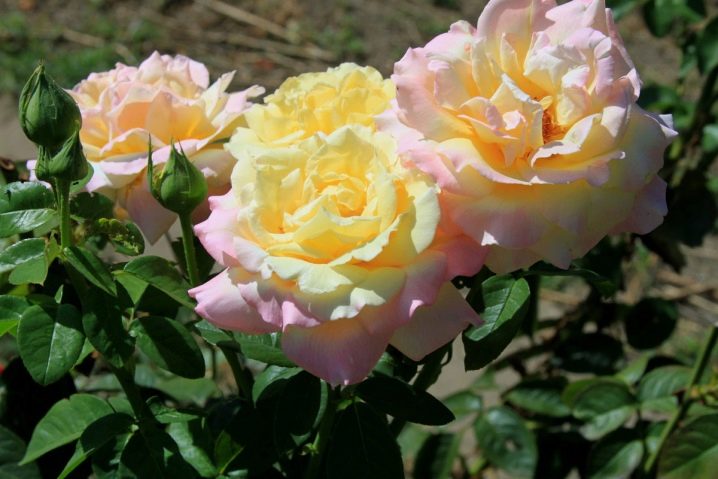
Roses have long been considered a royal flower, today it is difficult to imagine gardens, parks, flower beds without these plants. Such flowers look very bright and representative when decorating the interior, drawing up bouquets, living arches and other landscape compositions.
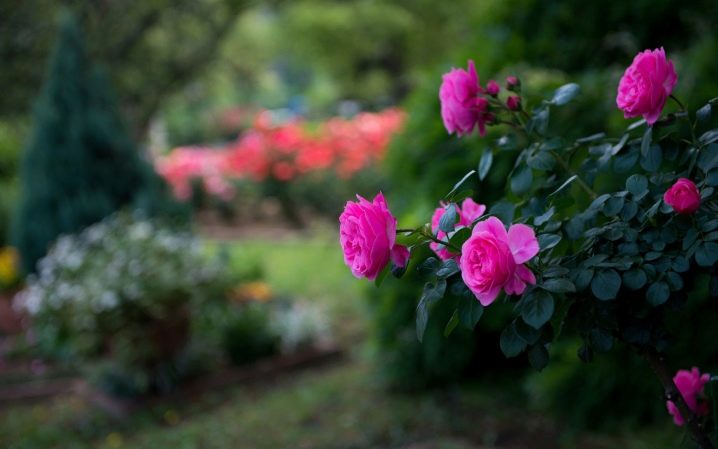
Landing features
If you are the happy owner of a summer cottage or a country house, you probably often had the idea to decorate the local area with a rose garden. It is worth noting that each varietal species has its own planting characteristics, but there are general principles that apply to almost all plants of the Rosaceae family.

Let's take a closer look at them.
- You can plant roses in the ground both in spring and in autumn, but you should know that if you plant in early spring, your plants will have advantages, thanks to which during the spring-summer period the plants will be able to root well and have time to prepare for winter. This is especially important for capricious and thermophilic varieties of roses, since they always need a little more time to adapt to new conditions. Experts believe that planting material purchased in the spring is more resistant to frost and more adapted to resistance to diseases and pests. In addition, spring soil is the richest in moisture and promotes the development of a powerful root system.

- When choosing a place to create a rose garden, you need to remember that roses love good illumination, but direct rays of the sun are undesirable for them, and in some cases are completely contraindicated. Also, rose bushes should not be exposed to a draft, so they should be planted where there is no wind or there is protection from it (house wall, fence, large shrubs).
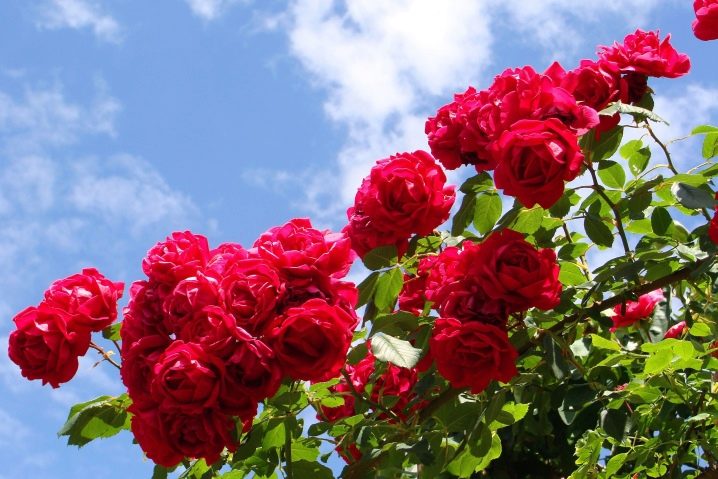
- Roses love soil with good fertilization and drainage. The best soil environment for them is loamy soil. However, with the necessary additives, roses can be successfully grown in clay or sandy soil areas.
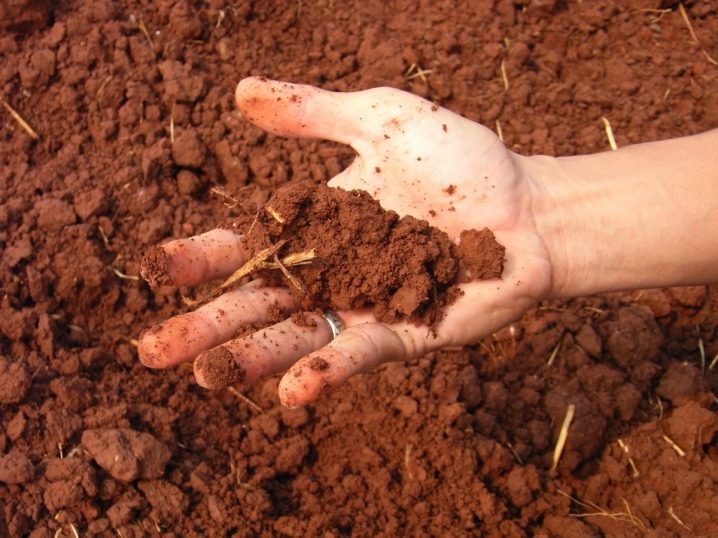
- An important point is the planting density. It will be determined by calculating what an adult plant will be like 2-3 years after planting. Guided by these data and common sense, roses should not be planted very densely, so that they do not interfere with each other's development. But at the same time, it is undesirable to make large distances between the bushes, since in this case the growth of weeds and drying out of the soil cover between the plants is possible.

These are all the general points to consider. Before you start planting rose bushes, you need to prepare the soil, and depending on its type, add clay or sand. The main ingredients needed for growing roses are humus, compost and sod soil. 2-3 weeks before planting the bushes, the soil must be dug up and abundantly shed with water, and this must be done several times so that the soil settles well, and after planting the plants it does not shrink much.
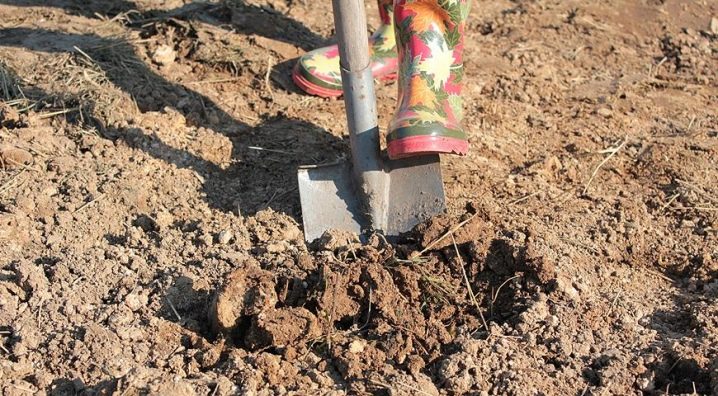
Soil shrinkage is dangerous because the root system can be exposed, and the plant will not survive frost in winter.
After finishing the preparation of the soil, you need to dig planting holes in it. - they are made in depth and width of at least half a meter. Fertilizing components are placed at the bottom of the hole, and sprinkled with earth on top of them. In total, you get two-thirds of the well's landing volume closed. Before planting, the cuttings of roses must be carefully examined, dead and damaged roots must be removed, and the seedling must be soaked in water for 5-10 hours. Only after this time is the planting material ready to be placed in the hole. It is best to plant a seedling on a small earthen mound of 5-10 cm, and it is necessary to deepen the stem of the seedling at least five centimeters from the place of its inoculation.
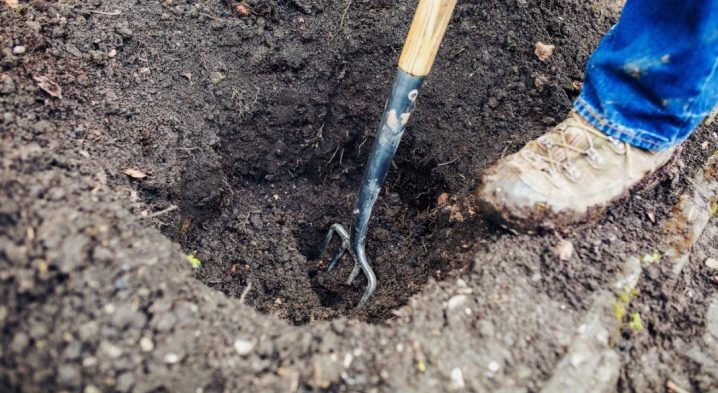
When planting roses, you need to make sure that the roots of the seedling are evenly straightened, and you cannot plant specimens bent upwards. After you have sprinkled the seedling with earth, the planting site must be watered abundantly - this is important so that air comes out of the soil and the soil shrinks. If the soil has settled very significantly, then more earth is added to the hole and again watered with water.
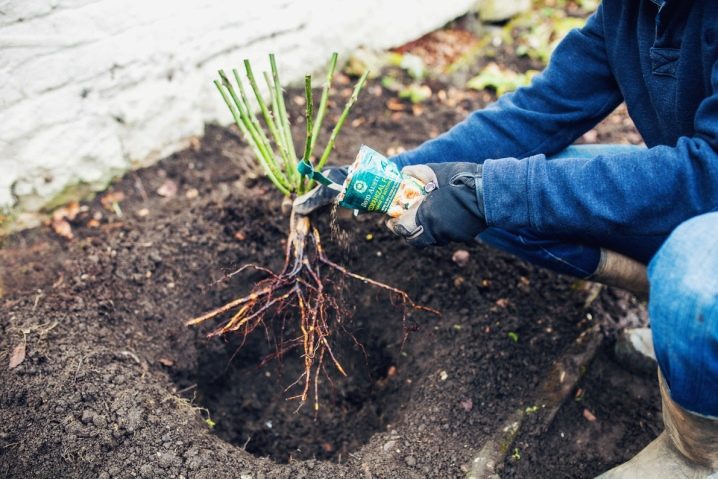
Next, you need to move on to the next stage - create a loose roller 20-25 centimeters high around the root system on the soil surface. This kind of protection will protect the young seedling from wind loads, frost and active rays of the spring sun. After 10-15 days, such a roller is leveled - during this time the roots have strengthened in the hole, and the plant itself has adapted to new living conditions for it. The soil around the rose can be covered with a thin layer of sawdust, pine needles and humus mulch - this will help to maintain moisture and prevent soil subsidence.

Subtleties of care
In order to ensure a high survival rate, special care is needed for rose seedlings, which is somewhat different from caring for bush and climbing varieties.
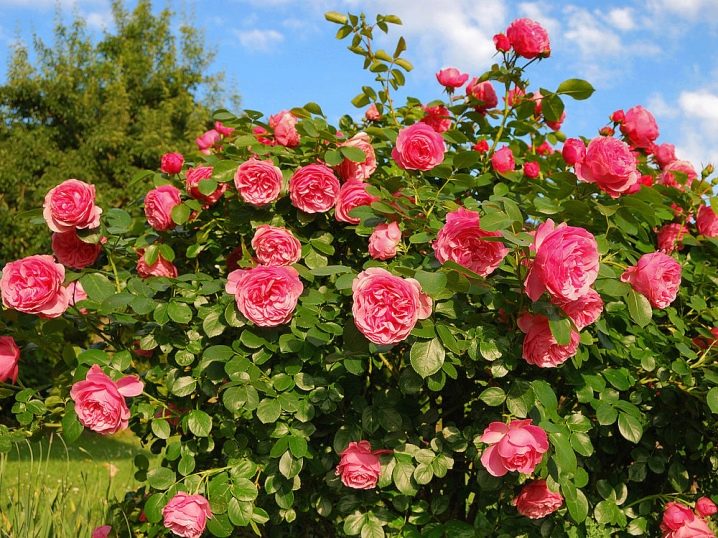
Caring for bush roses consists of the following nuances:
- bush varieties require foliar dressing;

- due to the close location of the rhizomes of the bush to the surface, weeds must be regularly removed on the soil around the seedling;
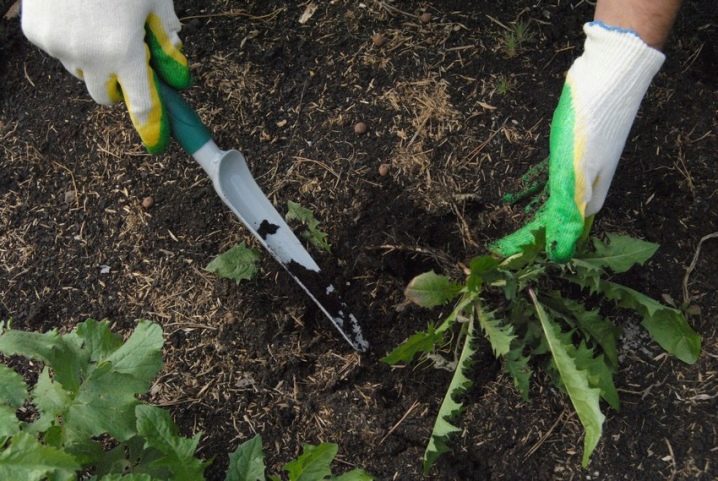
- rose bushes require frequent pruning of shoots, which direct their growth into the bush and weaken the growth of external branches;
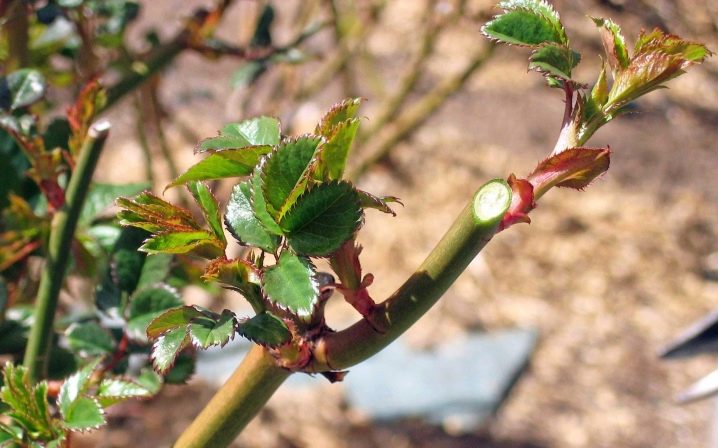
- in the first year of flowering, all the buds are removed from the seedling until they open, so that the plant does not waste energy on them, but develops, takes root and adapts.

Climbing roses are no less attractive, but caring for them will be somewhat different:
- climbing roses are planted in trenches, not holes;
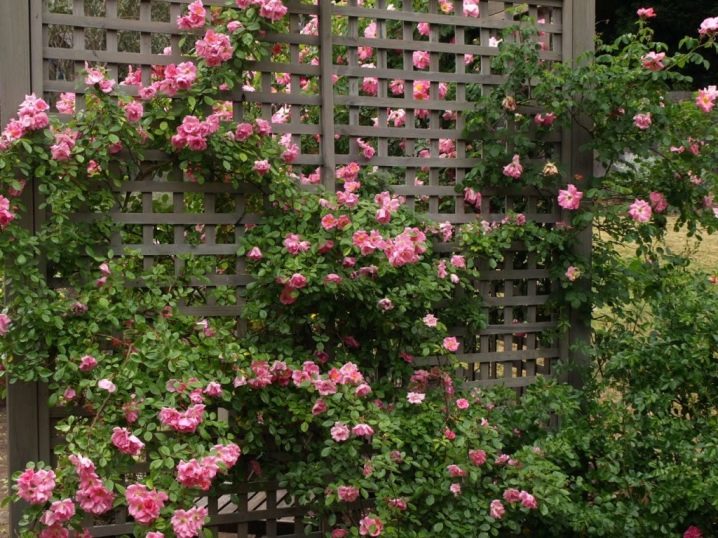
- climbing plants need support in the form of a wall of a capital structure or a special hedge;
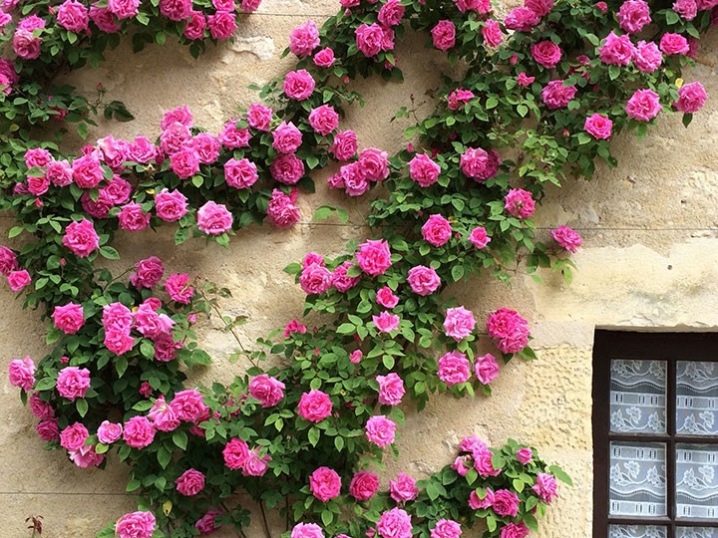
- after each flowering period, the climbing rose is pruned and done annually in the spring;
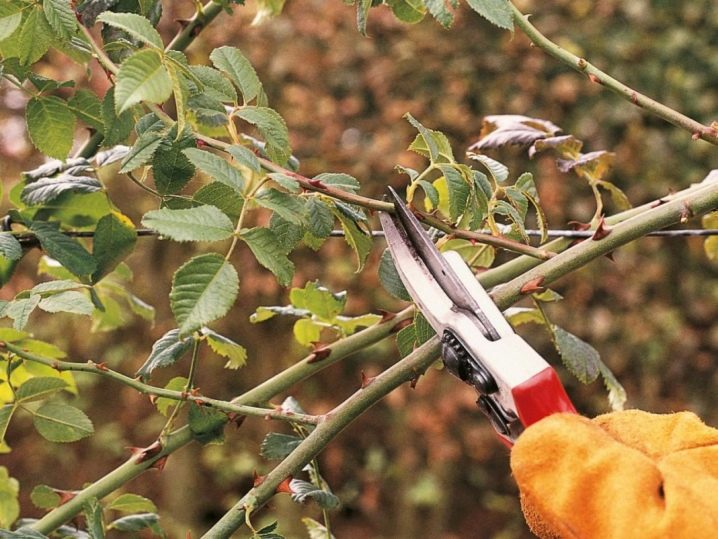
- in the fall, the plant is prepared for wintering: the branches are tilted closer to the ground and covered with coniferous spruce branches, often wooden houses are made for a rose from snow and wind;
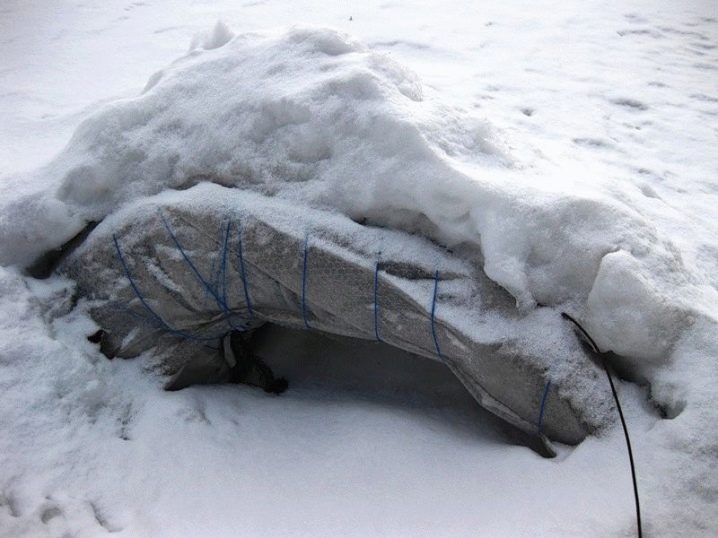
- in spring, a climbing rose needs abundant and regular watering.
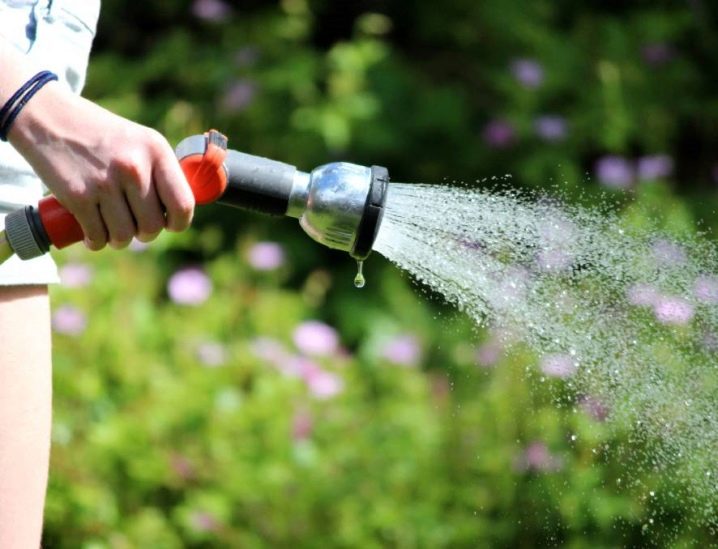
Diseases and pests
Roses, like other plants of the Rosaceae family, are often affected by pests and diseases. Recognizing and neutralizing the destructive effect of uninvited guests in time will save your beauties from death. Let's dwell on the most common ailments and pests.
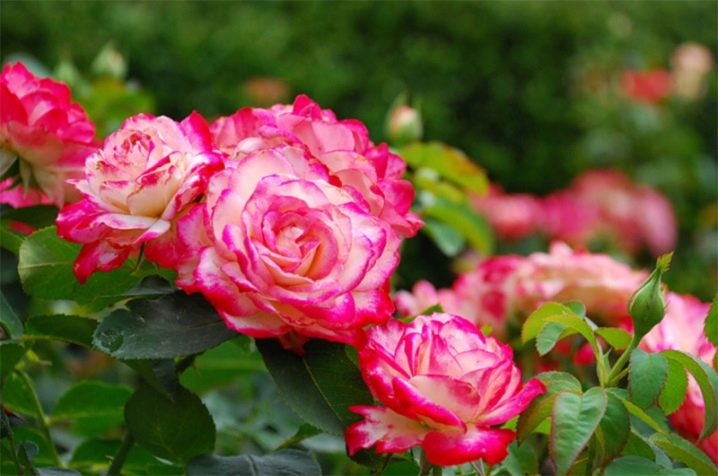
- Powdery mildew. It affects leaves, buds, stems. Outwardly, the parts of the plant look like they are sprinkled with flour. At the same time, the rose bush stops growing and stops flowering, and in case of severe damage it may die. Powdery mildew can be eliminated with colloidal sulfur in the form of a 1% solution or with copper sulfate. Every autumn, to prevent infection with this disease, the ground around the rose bush is sprinkled with ash.

- Rust. The disease manifests itself in the form of brown spots located on the leaves of roses. With such a lesion, the bushes stop growing and blooming. The diseased parts of the plant are removed and burned, and healthy shoots are treated with Bordeaux liquid.
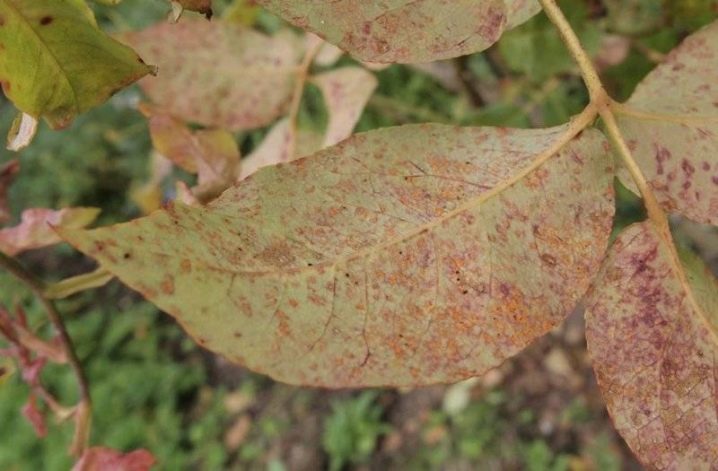
- Fungal infection. The disease declares itself with black spots located on the leaves of the plant. Diseased leaves fall off, and the plant stagnates and stops blooming. For treatment, copper sulfate and mulching the soil with a lime composition are used.
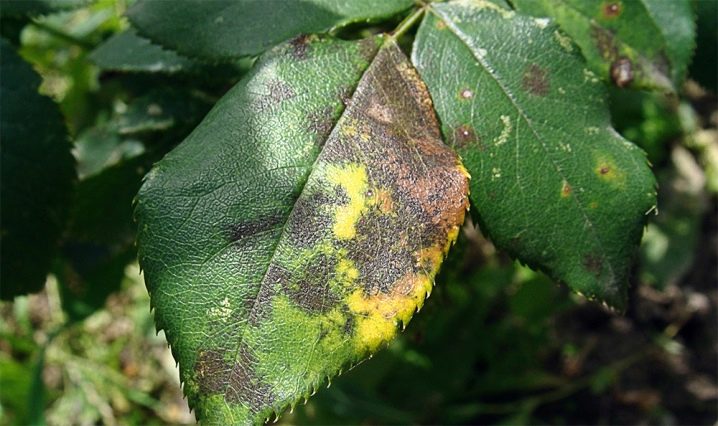
- Spider mite. This is a rather serious pest that reproduces in favorable conditions of greenhouses and greenhouses almost all year round. Ticks are flukes, and you will see light green specks on plant leaves where they bite. If the degree of mite infestation is high, the leaves of the plant will fall off. It is necessary to carry out the prevention of mite infestation for roses on an ongoing basis, since new generations of insects are adapting to previously used anti-mite drugs.
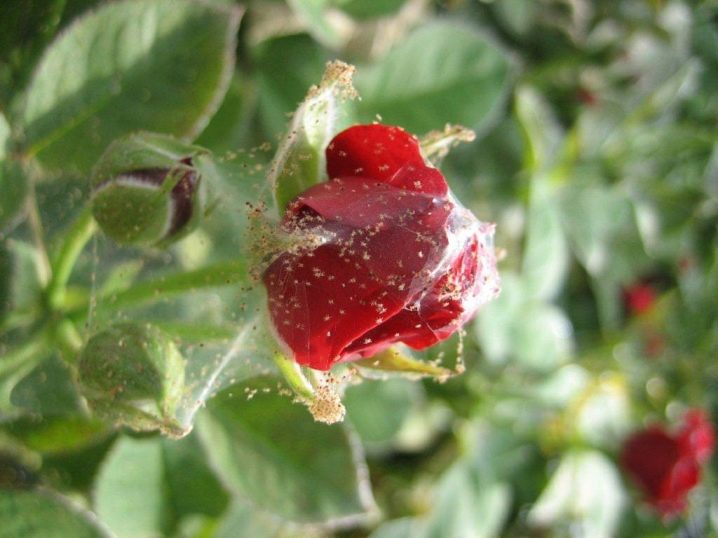
- Aphid. It is a small, greenish insect that chooses fresh shoots, leaves and flower buds for dislocation. The number of aphids grows very quickly if several individuals hit the plant. In the process of their activity, the plant undergoes deformation, since the aphid feeds on its tissues. You can suspect the presence of aphids by the presence of ants around the rose bush - these insects are attracted by the sugary secretions of aphids. To destroy the population of harmful aphids, it is necessary to use insecticidal agents.
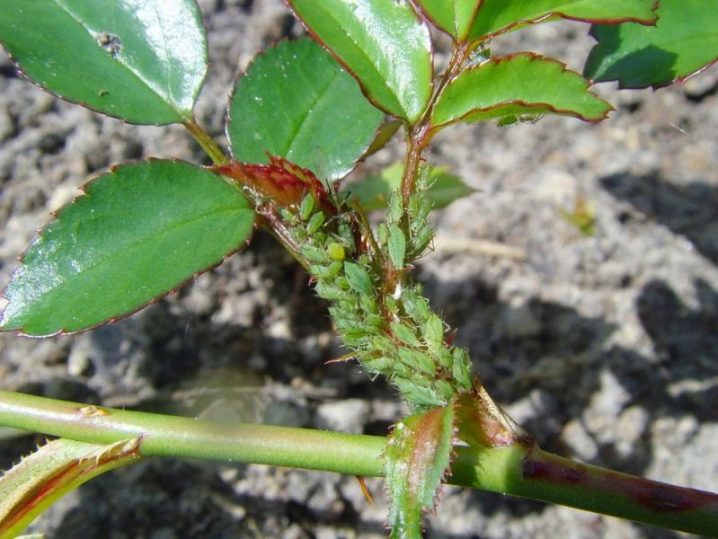
- Leaf roll. These small moths living on roses are active at night and twilight. For wintering, the leafworm lays eggs in the bark of the plant, and in the spring larvae appear there and feed on the juice of the rose. Then caterpillars emerge from the laid eggs and spread over the leaves. They feed on them, simultaneously folding the leaf into a tube and wrapping it in cobwebs. You can fight the leaf roll with the help of natural insecticides, and the affected areas of the plant are removed and burned.
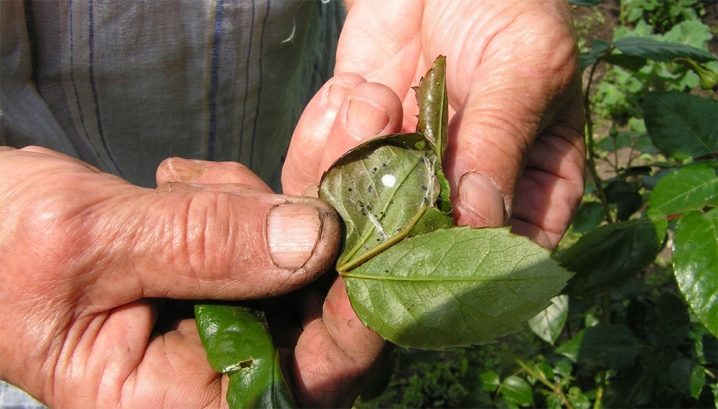
In order for your roses to please you, you need to choose varieties that are adapted to the area where they will grow.
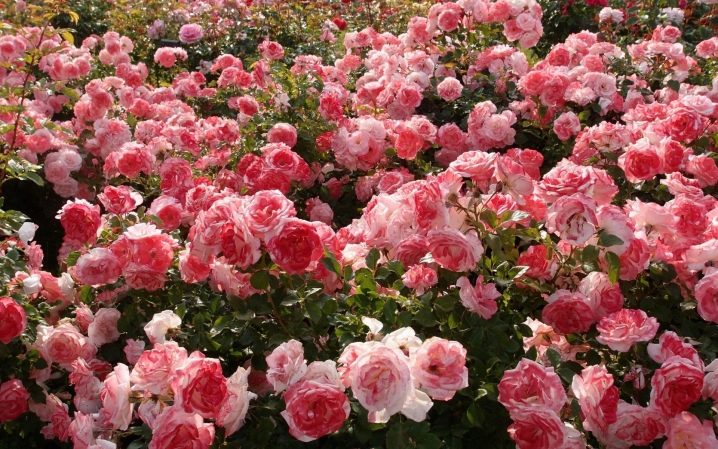
If you know what pests and diseases are most common in your area, try to select varietal types of roses that are resistant to them. In addition, when buying planting material from the nursery, make sure not to purchase diseased plants.

Use in landscape design
A hot pink or deep pink shrub rose is a great way to decorate any plot of land. With its help, you can equip a hedge and divide the site into target zones. These plants can become a background spot when creating a group flower arrangement in a flower bed, or they can play the role of living borders, beautifully framing garden paths.

If you like climbing varieties of roses, then with their help it is quite possible to decorate the walls of capital buildings, make beautiful arches and hedges, and even create a sound barrier.
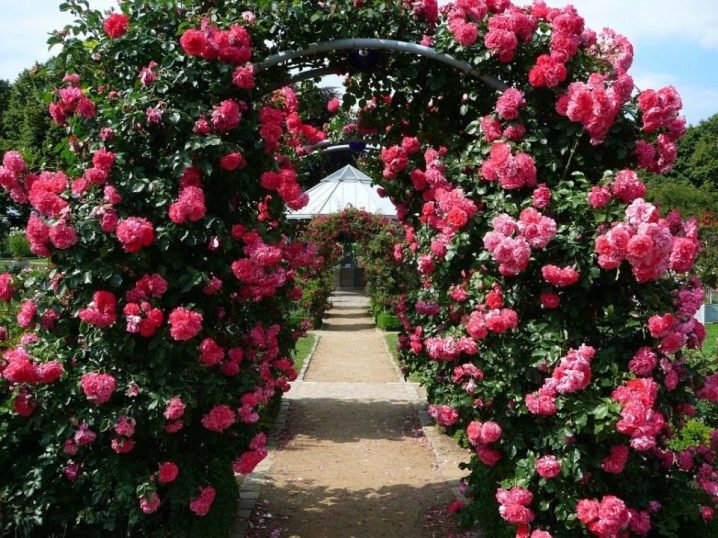
Roses planted in large flowerpots and decorative pots are no less interesting. Miniature rose varieties are sometimes used as ground cover plants, creating a special kind of landscape. Roses look beautiful in groups and planted singly. This is a versatile plant that will not leave anyone indifferent, and will give room for a flight of imagination and creativity.
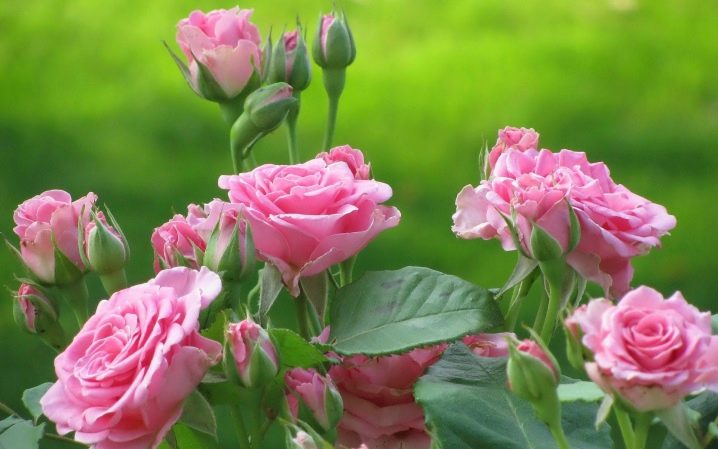
For more information on pink roses, see the view below.

































































































The comment was sent successfully.